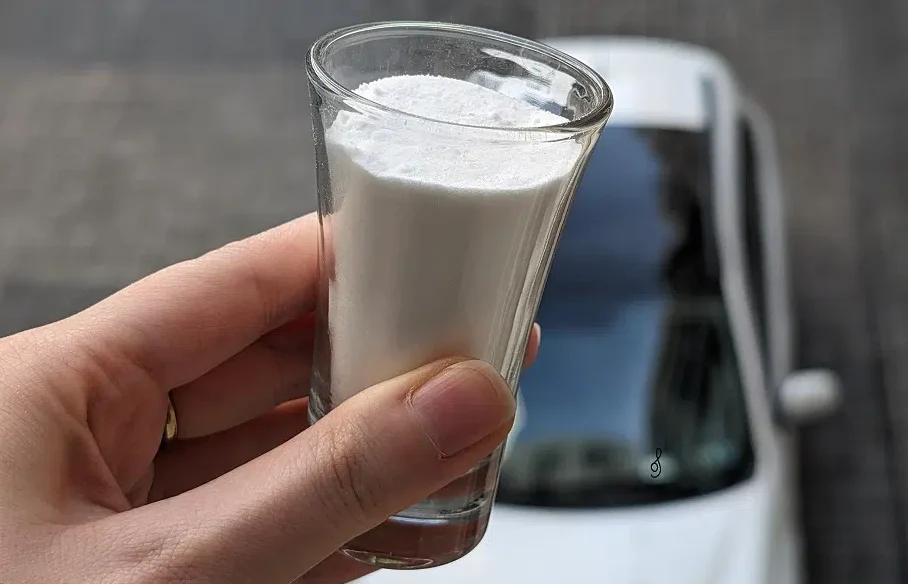Introduction Placing a glass of salt in your car is a low-cost, old-school humidity-control hack that many drivers swear by for reducing moisture, preventing windshield fog, and keeping musty odors at bay.
Origin The idea comes from the long-known hygroscopic property of salt (it draws moisture from the air). Before affordable desiccant packs were common, households used bowls of salt or other absorbent materials to reduce dampness in closets and rooms — the trick migrated to cars because closed vehicles can trap humid air.
Cultural Significance This hack is part of the broader tradition of resourceful, make-do solutions people use to solve everyday problems without buying specialized products. It’s popular among drivers in damp climates, vintage car owners trying to protect interiors, and anyone who prefers budget-friendly fixes.
Ingredients Quantity 1 small glass or jar (about 6–12 oz / 180–350 ml) and 1–2 cups of table salt (plain, unscented).
Optional Additions A few drops of essential oil on the inner cardboard tube for a light scent (use sparingly), or topping the salt with a layer of paper towel to prevent scattering. For stronger moisture removal, consider calcium chloride (often sold as a dehumidifier crystal) instead of plain salt.
Tips for Success Use a container that raises the salt off the carpet (a shallow jar on a small tray or in the cup holder). Punch a few small holes in a lid or cover the top with breathable material (paper towel) so salt can absorb moisture but won’t spill. Check the salt weekly; when it clumps or becomes wet, replace it. Avoid placing salt where it can contact metal or fabric directly — spilled salt accelerates corrosion and can stain.
Instructions Pour salt into your chosen container, cover with a breathable layer or a lid with holes, place it upright in a secure spot in the cabin (cup holder, center console, or one footwell when parked), and leave it there for 1–4 weeks depending on humidity. Replace when noticeably damp or clumped. For winter use, remove any salt before driving on roads with heavy slush or when transporting items that could be damaged by salt.
Description A humble cup of crystalline salt silently draws excess moisture from the air inside the vehicle, reducing fog on windows and minimizing the musty smell that develops in poorly ventilated cars. It’s cheap, quiet, and requires no power.
Nutritional Information Calories: 0. Sodium: don’t lick it — contributes 0% to healthy driving but 100% to humidity control when used correctly.
Conclusion A glass of salt can be an effective emergency or budget dehumidifier for cars, but it’s a short-term solution with limitations — it absorbs only so much moisture and can become messy or corrosive if spilled.
Recommendation If you need a simple, temporary fix, use the salt trick but place the salt in a secure, covered container and check it often. For regular moisture control, invest in reusable silica gel packs, automotive desiccant packs, or small electric car dehumidifiers — they’re safer for interiors and more effective long-term.
Embracing Healthful Indulgence Keeping your car dry and fresh is a small act of self-care: whether you choose a humble glass of salt or a sleek desiccant pack, protecting your vehicle’s interior makes driving more pleasant and preserves your investment. Want a one-sentence quick alternative I recommend? Use a sealed container of silica-gel or a calcium-chloride car dehumidifier instead — safer and more effective.
